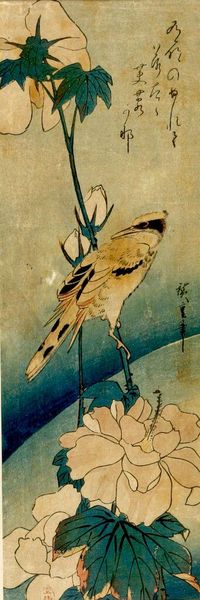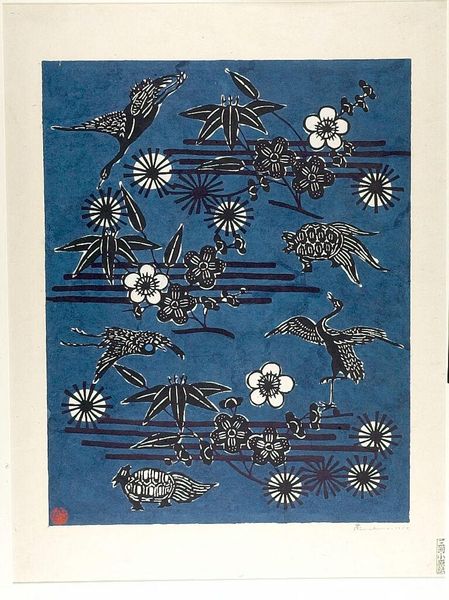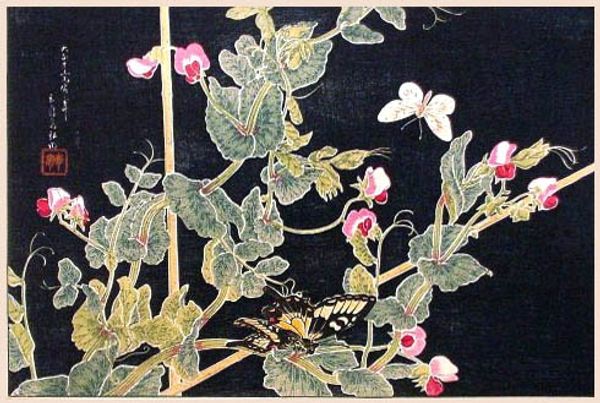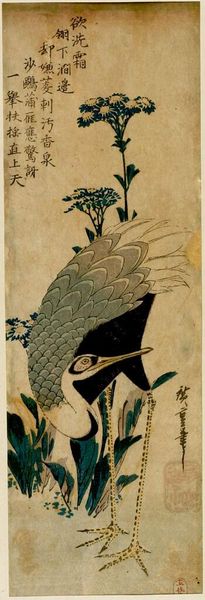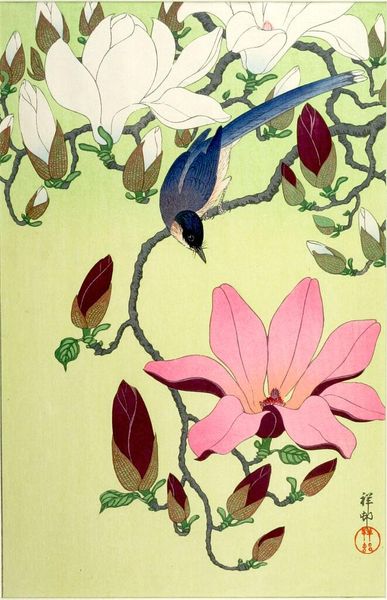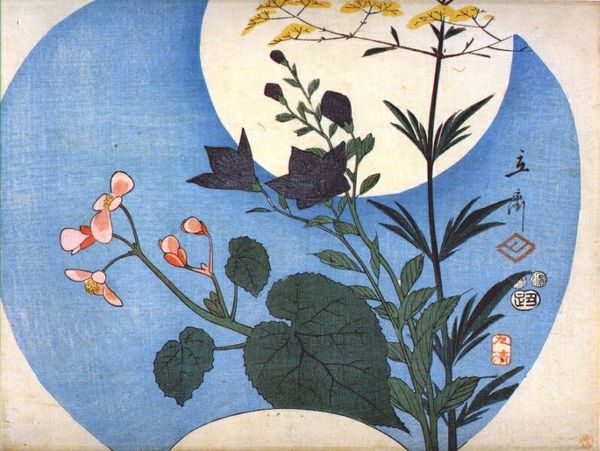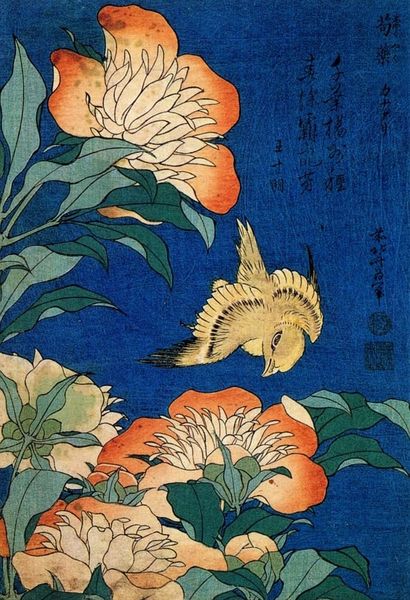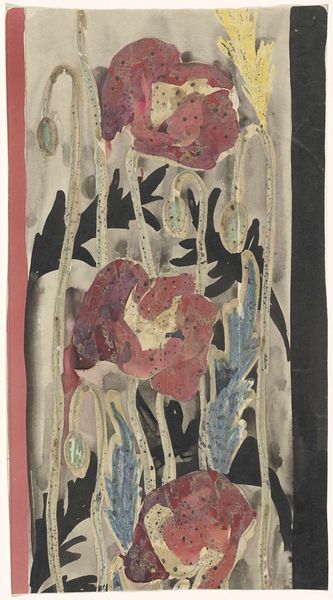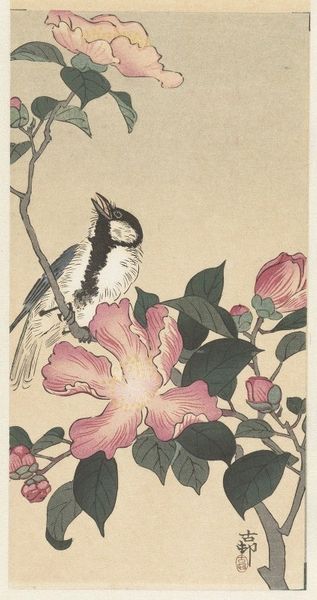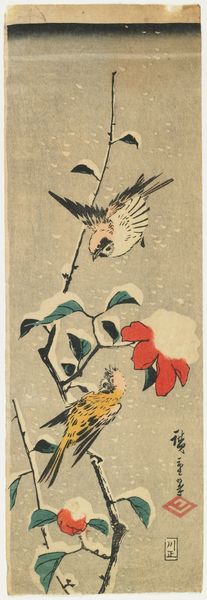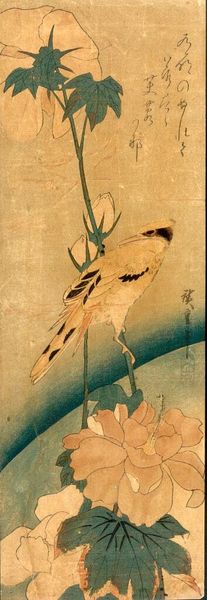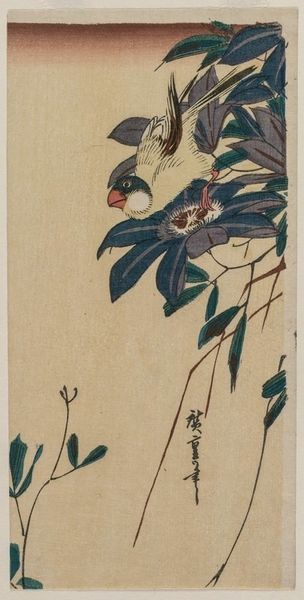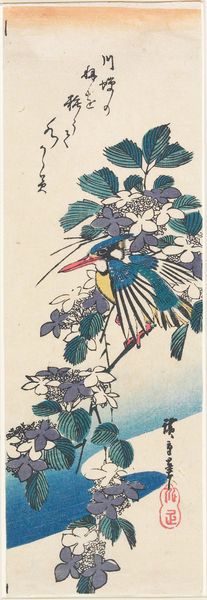
Dimensions: chūtanzaku: H. 37.1 à W. 11.4 cm (14 5/8 à 4 1/2 in.)
Copyright: CC0 1.0
Curator: Here we have Keisai Eisen's "Sparrow and Camellia," a Japanese woodblock print created sometime between 1790 and 1848. Editor: Immediately, I’m struck by the deep, almost overwhelming blue. It evokes a feeling of melancholy, or perhaps serene contemplation. Curator: The piece, while seemingly simple, embodies social commentaries on isolation and the fleeting nature of beauty, reflecting the Edo period's anxieties. Editor: Absolutely. The sparrow, poised on the branch, could symbolize the individual navigating a restrictive society, while the camellia, often associated with transient beauty, underscores themes of impermanence. Curator: Considering the historical context, the camellia also challenges traditional gender roles, as its resilience mirrors women's strength amidst societal constraints. Editor: It's fascinating how these symbols intertwine, creating layers of meaning that speak to the resilience of the human spirit, even within constraints. Curator: Yes, looking closely at Eisen's work helps us reassess conventional perspectives, highlighting marginalized narratives and voices. Editor: It's a reminder that even in moments of perceived quietude, art can spark profound conversations about the human condition.
Comments
No comments
Be the first to comment and join the conversation on the ultimate creative platform.

